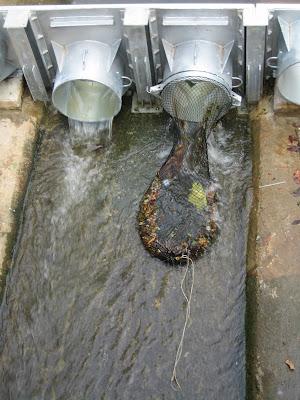changes to the pasar malam scene

photo from national archives of singapore
pasar malam (night bazaars) have been around from as early as the 60s. maybe, even earlier. in those early days, the hawkers set up everything themselves. they set up their own portable tables or just lay a mat on the ground to display their ware and they provided their own lighting, using those kerosene pressure lamps or even carbide lamps. before the generator made its appearance at night markets, some would also use those florescent lights that ran on batteries.
in the old days, most pasar malam were a one-day affair. the pasar malam were scheduled according to location. ( i think, they still have this system for small towns in malaysia.) so, for example, on monday night it would be along a certain stretch of thomson road, tuesday night, it would be held at balestier road and so on.
because it was a one-day happening, the stall-holders could be seen packing up slightly after 10 p.m. when the crowd would have thinned considerably. nowadays, the stall-holders either sleep at the site or they just cover everything with the blue and white tarpaulin sheet and leave for home.
in the early days, there was no protection offered from the elements. they did not have the canvas or tarpaulin shelters put up by the contractors for the present day stall-holders. in those bygone days, when it rained, the wares would be hastily bundled up and the pasar malam would come to a close. today, when it rains, business can go on as usual although takings will definitely be affected as most potential customers will stay away.
 photo from national archives of singapore
photo from national archives of singapore
today, the stall-holders at pasar malam (night bazaars) are still itinerant: they move from one location to another location. after a few days' stay at one part of an estate, they will move on to another part, in the same estate or to another estate. depending on the lucrativeness of the location, today's pasar malam may last from 3 days to 2 weeks. (we are not talking about those housed under one huge tent or those at chinatown, geylang and little india prior to the respective festive seasons; those go on for one month or longer.)
these days, the pasar malam is not really the place to seek out cheap bargains because the stall-holders have to pay a fee to the residents' committee or the town council for the use of the place and for the facilities that are provided for them. lately, these facilities include the installation of wash basins and provision of fire extinguishers at the site. i observe that the wash basins are meant only for the stall-holders to use.


today, this banner - advertising the ramly burgers - can be seen at every pasar malam. the stalls manned by malays are mostly food stalls. besides the very popular ramly burgers, you can also get other popular malay food like nasi lemak, epoh epoh, otah and goreng pisang. other stalls managed by malays are those selling clothing and health tonic or ointment. so far, i have come across one manned by indian - two indian ladies selling vadai.

the prices are comparable to those at neighbourhood food courts and the stalls outside some shopping centres. a beef or chicken burger is priced at $2.80, a canned drink cost $1.00 and otah costs 30 cents a piece. one large mango cost about $2.00 and durians are at $10.00 for three fruits.
one type of snack food sold by the chinese, which can be bought at pasar malam only, is the tea egg. i have never tasted one and i do not think i will ever do because i am put off by the smell.
tea eggs are simply hard-boiled eggs that have been further stewed in a salted tea liquid. other flavourings such as soy sauce and the five-spice powder are often added as well.
the name 'pasar malam' does not seem appropriate in these modern times; it seems like a misnomer. since they pay rent, the sellers try to maximise the opening hours and some actually start operation as early as eight o'clock in the morning. (these pictures were taken at bangkit road in bukit panjang at about 9.00 a.m.)


although, much has changed over the years, the fact remains that the pasar malam is the place to go to savour local delicacies and to buy accessories, clothes, cds (tapes in the past) and toys.
like in the past, there are still game stalls where the children can have some fun fishing for artificial fish or frogs, spin a numbered wheel or throw balls to knock down some objects (toys) for them to take home.










 photo from national archives of singapore
photo from national archives of singapore

















 the site of the former haw par swimming pool
the site of the former haw par swimming pool
 this is the public car-park behind the ava centre for animal welfare and control
this is the public car-park behind the ava centre for animal welfare and control




 photo from memories of singapore
photo from memories of singapore photo from national archives of singapore
photo from national archives of singapore

















